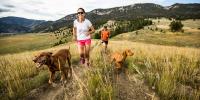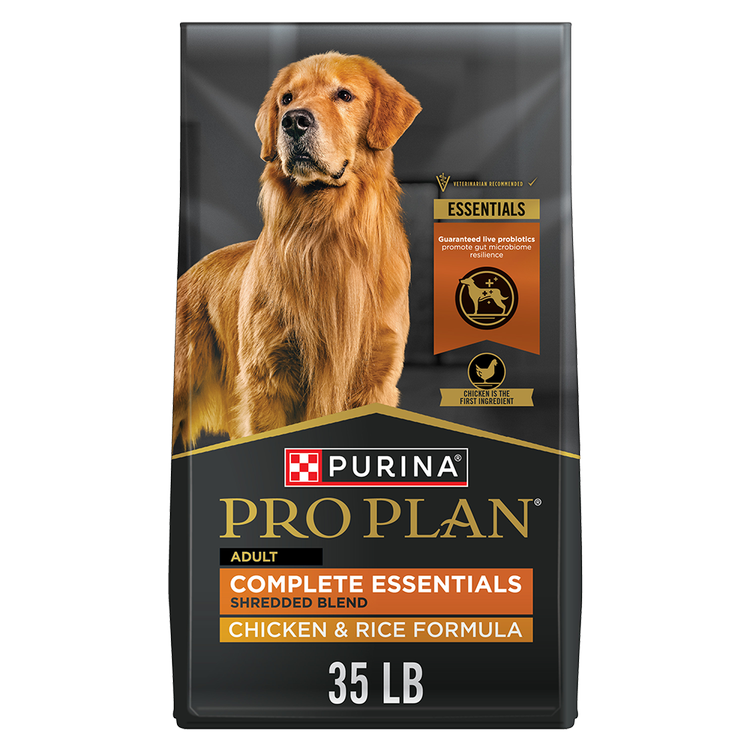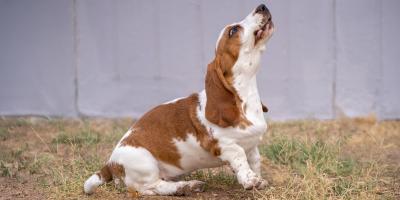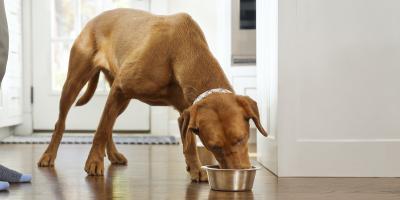How Much Exercise Does a Dog Need?


Knowing how much exercise your dog needs and how often they need it starts with factoring in their age, size and health.
A healthy dose of exercise is beneficial to your dog’s physical and mental health. Generally, most breeds need more than a short walk a couple times a day to feel fulfilled, but every dog is different; therefore, they each have a different threshold for how much exercise is best.
Sporting breeds like Retrievers, Spaniels and Setters will need more daily exercise than dog breeds more inclined to be adorable couch potatoes. Sporting breeds in their prime years will need at least 60 and 90 minutes of activity to stay in peak condition.
To avoid injury or overexertion, keep an eye out for any signs your dog may need to take a rest or call it a day. For puppies whose bodies are still growing, plenty of rest is essential.
How Much Exercise Does a Puppy Need?
Keep puppies to short bursts of 5 to 10 minutes of playtime about 6 times a day. Although puppies are tiny whirling dervishes of energy, they actually need less total exercise than adult dogs and require lots of downtime to rest up so they can resume their rambunctious activities.
Keeping that in mind, if you’re asking yourself, How long should I walk my puppy? try to keep your daily walks relatively short and vary the surfaces from sidewalks to grass to dirt/gravel trails.
Compared to walks you’d give to an adult dog, puppy walks should be significantly shorter, as their developing bones and joints may be more vulnerable to wear and tear. The same is true with the fun games you and your puppy play together.
Know Your Dog’s Needs
As you and your dog exercise, consider their age, breed and present physical condition. Leisurely walks may be best for an older dog, while a young dog is more likely to have ample energy for something more vigorous.
Regardless of your dog's age, allow them to have some unstructured “sniff time.” Sniffing releases serotonin and improves mental health.
Also, keep an eye out for any signs of fatigue or overheating. If your dog decides to stop and rest in the middle of playtime or refuses to go any further during a walk or run, give them a few minutes to relax and don’t push them to keep going if they don’t seem interested.
Since dogs cool down by panting rather than sweating, be aware of excessive panting, which can be a sign of overheating. Forceful, heavy panting and a refusal to continue exercise are sure signs that your dog needs to cool down.
Before exercising your dog, ensure they’ll have access to plenty of water when needed. If running with your dog, make frequent stops to allow them to cool down and take a drink.
Also, check the temperature. If it’s during the hot summer months, consider taking them out in the mornings or evenings when it’s cooler.
Find the Right Activity
If you and your dog are athletic, it’s okay to take them on runs or other athletic activities with you. Just make sure to gradually increase the difficulty level of the activity. Generally, avoid anything too strenuous and keep tabs on any signs of fatigue your dog may be exhibiting.
If your dog has more energy to expend than you, teach them to fetch a ball or a flying disc, or explore agility activities. The activity may be just right for you and a challenging exercise for your dog.
Ease Into It
If, for whatever reason, you have not exercised your dog regularly and decide to launch a regular exercise program, go slowly at first. Begin with short periods of activity at slow speeds and gradually increase the time, speed and distance of the exercise.
Each time you exercise your dog, do a quick warm-up and cool-down routine at the beginning and end of the activity. Doing so can help your dog avoid injury.
Whether it’s a slow 5- to 10-minute walk leading up to and cooling down from a brisker walk or talking to your veterinarian about strategic stretches you can do with your dog, it’s important to get their muscles loose before a workout.
We wish you luck in finding the proper exercise regimen for your dog. Regular exercise is a key component to a healthy lifestyle (both physically and mentally) for your dog.
Find out more helpful information about dogs and puppies and see what our pet experts have to say on our Pet Expertise page.
Related articles

Reward Yourself with myPurina
Earn and redeem rewards for Purina products with the myPurina app.






